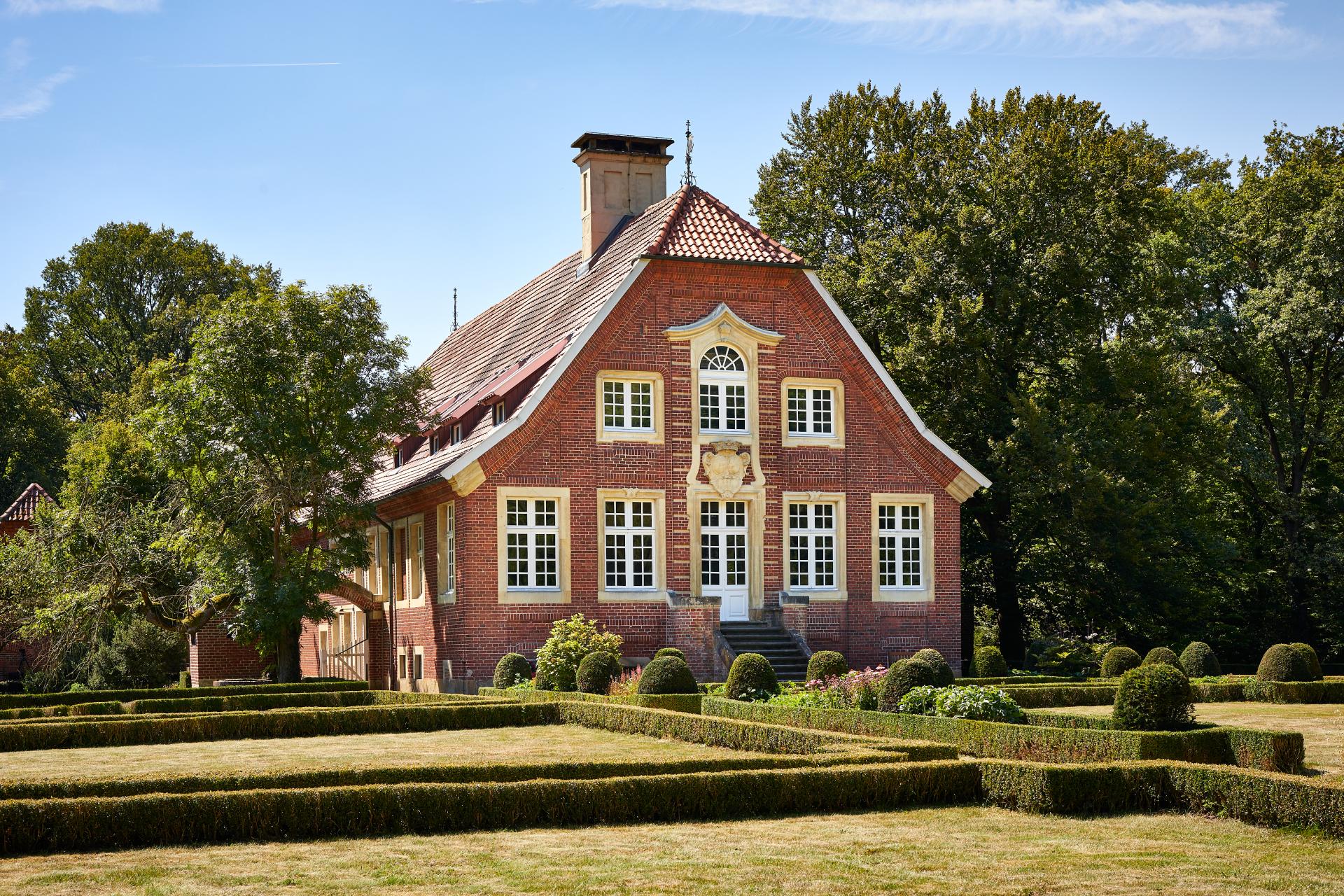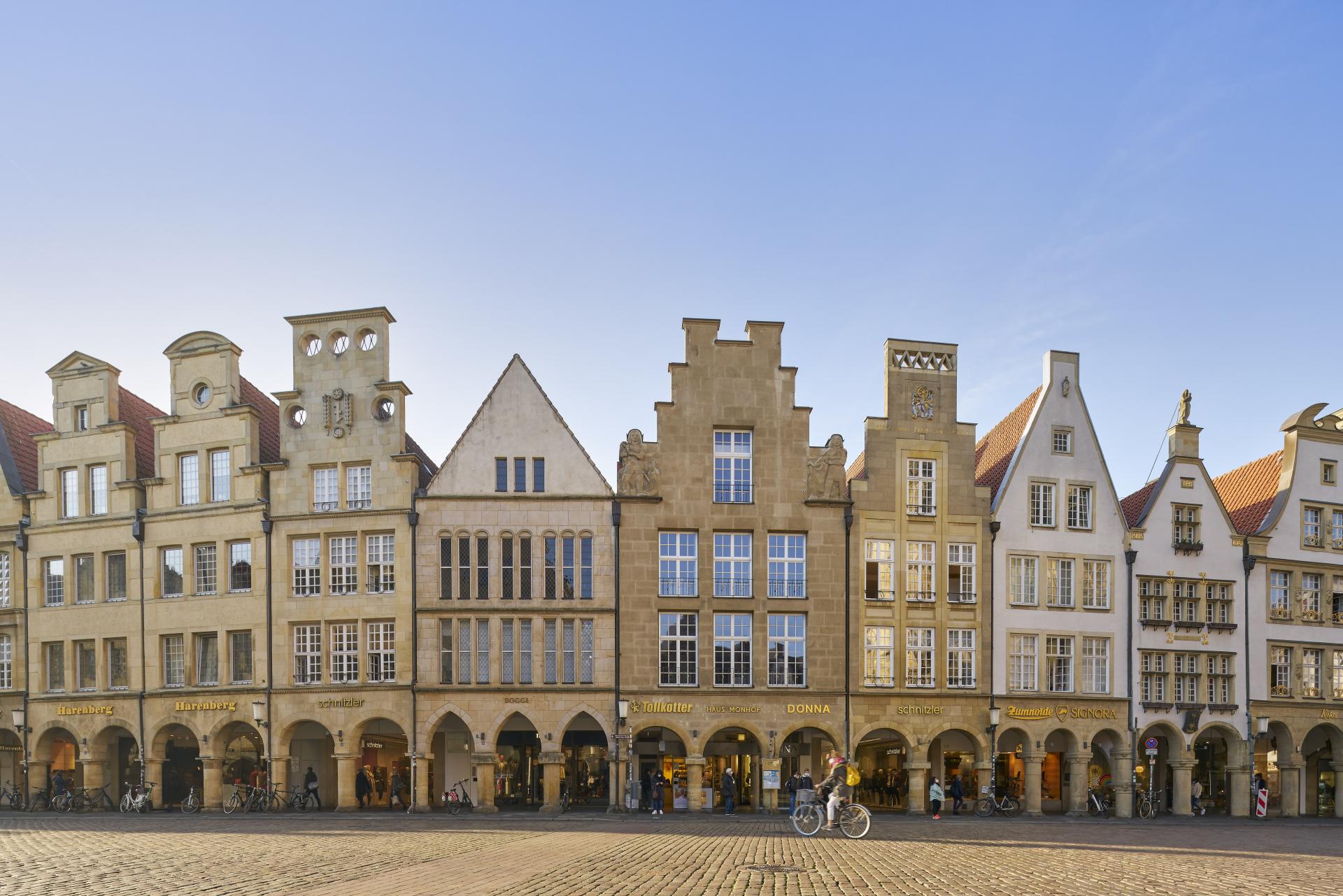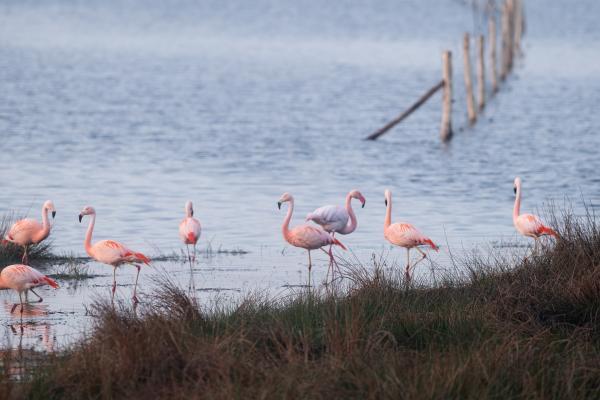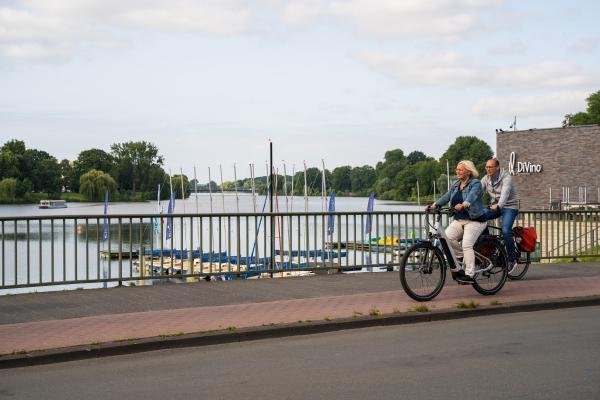
In the picturesque western Münsterland, you ride on idyllic paths through pleasantly flat terrain without much effort, passing impressive castles and palaces, historic noble residences, and moated farms. The Münsterland park landscape is perfect for enthusiastic cyclists!
Bicycles are also called 'Leezen' or 'Fietsen' here: The Dutch influence is palpable everywhere, and cycling is a true way of life. Over centuries of agricultural use, a cultural landscape with small-scale structures of fields, meadows, pastures, and individual farms has emerged. Magnificent hedgerows, avenues, and small farm woodlands separate the fields from each other and give the region its distinctive park-like character.
The reason why there are so many castles and palaces in the Münsterland is as follows: Until the Congress of Vienna in 1814/15, there were countless small territories that, thanks to the fertile soil, mostly possessed representative manor houses. A little pomp and grandeur were necessary. Whether in the medieval, Renaissance, or Baroque style, all buildings reflect European architectural history, with regional characteristics manifested through the use of light Baumberger sandstone.
Some of the impressive palace buildings, water castles, and manor houses are still "majestically" inhabited or used as educational or administrative facilities. Others are waiting to bring their often eventful and exciting history back to life during a visit. And on the way to Münster, there are plenty of opportunities to do so!
Your highlights on this culture story
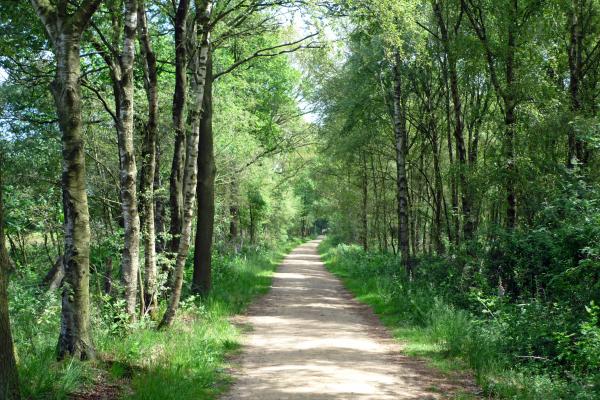
Münsterland park landscape
From a bird's-eye perspective, the Münsterland may appear as a walkable landscape painting. The loose succession of farmland, meadows, small woodlands, numerous natural water bodies, and hedgerow areas creates a harmonious overall picture. It is a cultural landscape with small-scale structures that have developed through centuries of agricultural use. Due to scattered settlements of farmsteads and individual homesteads, as well as occasional water castles, moated farms, and castles, which led a self-sufficient existence and relied on various agricultural areas for cultivation, the individual landscape elements repeat themselves. Magnificent hedgerows, distinctive solitary trees, and small farm woodlands structure the flat and open fields and meadows, giving the Münsterland its park-like character.
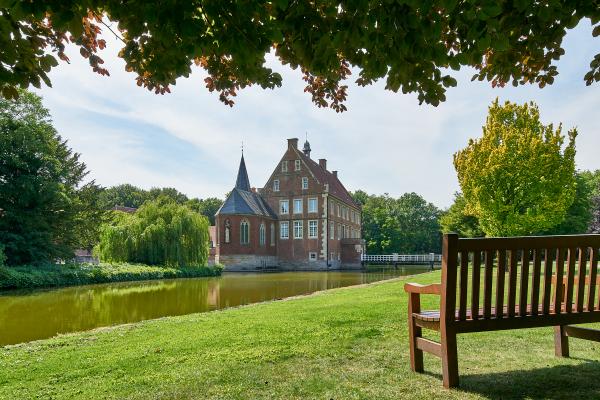
Hülshoff Castle
As a typical Westphalian water castle from the 16th century, Burg Hülshoff in Havixbeck is beautifully surrounded by moats and a magnificent park. It is the birthplace of Annette von Droste-Hülshoff, one of the earliest and most important German-speaking poets of the 19th century.
Even in her youth, she created complex and linguistically powerful poetry and prose, which, however, only gained recognition in Germany and throughout Europe after her death. With a keen eye, she illuminated the political, social, and societal upheavals of her time, and her influence can still be felt in the contemporary literary scene.
Today, the castle houses the Droste Museum, the Center for Literature, and a restaurant. While the exhibition showcases individual rooms of the poet, as well as personal belongings, precious furniture, and the richly stocked library, the Center for Literature is dedicated to current research and the advancement of literature. It also engages in dialogue with contemporary arts and offers various thematic events.

House Rüschhaus
In the elegant country house "Haus Rüschhaus" in Münster Nienberge, the poet Annette von Droste-Hülshoff spent the second half of her life. After the death of her father in 1826, she moved with her mother and sister to the former summer residence of Westphalian architect Johann Conrad Schlaun, which impressively combines rural, representative, and noble architectural features. A beautiful baroque garden extends around the moat island, and the former utility and ornamental garden at the back has been restored. Annette von Droste-Hülshoff resided on the mezzanine floor. Her living room also served as a workspace and was lovingly referred to by her as the "snail shell." It was here that she found artistic inspiration in nature and created a literary monument to her homeland of Westphalia with her work "Die Judenbuche" ("The Jew's Beech").
.
Do not miss!
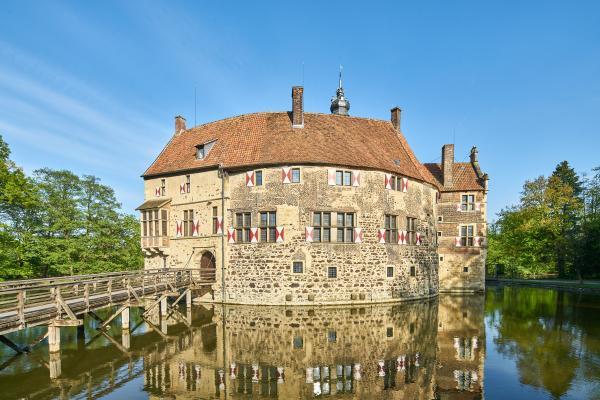
Region of castles and fortresses
They are strung together like pearls in the gentle park landscape of the Münsterland: imposing water castles, romantic castles, enchanting monasteries, and abbeys. Here, you experience history and stories as intensely as in hardly any other region. Welcome to the castles and fortresses region of Münsterland.
Believe it or not, over 100 castles, fortresses, manor houses, monasteries, estates, and noble residences await you here. This density of stately properties, the abundance of water castles, and the number of historical noble families who have cared for and preserved these estates since the Middle Ages make the area between Rheine in the north and Haltern in the south, Bocholt in the west, and Warendorf in the east a truly astonishing region of castles and fortresses. It is a region where you can discover and learn endlessly - and on particularly flat, pleasant routes.
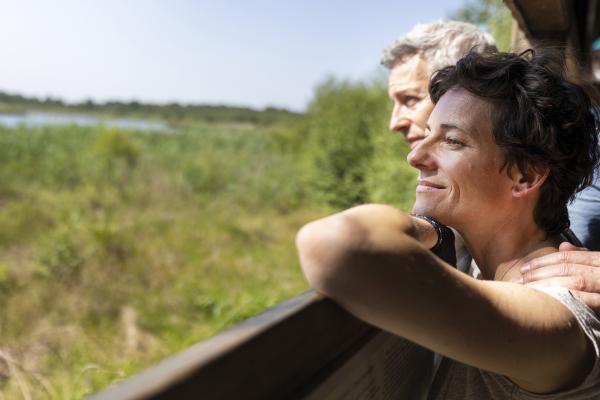
Zwillbrocker Venn
The Münsterland as a natural habitat for flamingos, here in the North German Lowlands? It's hardly believable, but in the Zwillbrocker Venn, a small population settled in the 1980s. As a former raised bog with valuable wet meadows, moor and heathland, as well as large, shallow lakes, the Venn provides ideal living conditions for these graceful exotics, who typically prefer the sunny south in Europe. They are likely refugees from zoos or private collections, forming the northernmost breeding colony in the world today. In the nature reserve located in the German-Dutch border area, they coexist with over 140, some very rare, breeding and migratory bird species. From March to September, you can observe the flamingos in their natural habitat at Lachmöwensee before they migrate to their winter quarters in the Netherlands in autumn.
Regional products along the cultural history
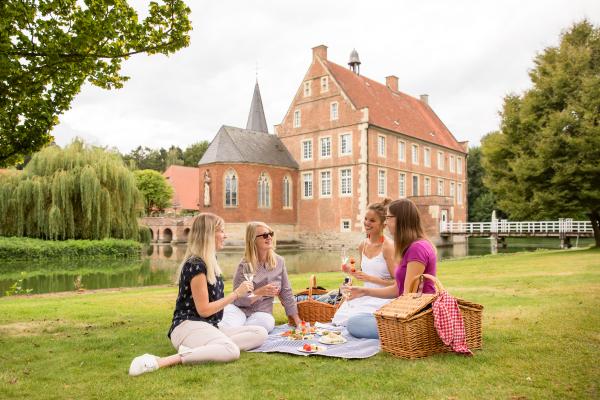
Picnic in Münsterland
Need a little break? Picnicking in the Münsterland is always a great idea, anywhere and anytime! Gardens, parks, and promenades offer many beautiful picnic spots and diverse picnic events. Whether by the lake, enjoying the soothing sounds of the water, in the forest, right in the city, or in a castle garden with a magnificent backdrop, savor those precious vacation moments on your picnic blanket.
If you don't have your own picnic basket but still want to indulge in some regional delicacies, no problem! There are several local establishments where you can pre-order a ready-packed picnic basket filled with a variety of delicious treats.

Münsterland Collection
Are you searching for a truly special gift or looking to treat yourself? How about something that represents the essence of home?
Here, you will find high-quality and regional products from the beautiful Münsterland region. Are you a connoisseur? Then you might enjoy the delicious "Gräftenwasser," an aromatic juniper schnapps, or a sweet vanilla liqueur. Are you creative? You'll surely appreciate the unique coloring book or the challenging puzzle. Or perhaps you want to expand your picnic equipment? Take a look around and discover the Münsterland collection.
The highlights along the route
Our daily stage recommendation
Etappe Zwillbrock-Coesfeld
Auf der flachen, leicht ansteigenden Etappe treffen Sie auf den nördlichsten Brutplatz von Flamingos, die weltgrößten Schuhe und eine Stadt, welche Anfang des 17. Jahrhunderts für einen Tag Mittelpunkt Europas war.
Etappe Coesfeld-Münster
Burgen, Schlösser, Rittergüter, Klöster und ein Stiftsdorf: Die zweite, teilweise leicht hügelige Etappe, versetzt Sie in andere Zeiten. Passende lyrische Begleitung erfahren Sie zwischen Burg Hülshoff und Haus Rüschhaus.


